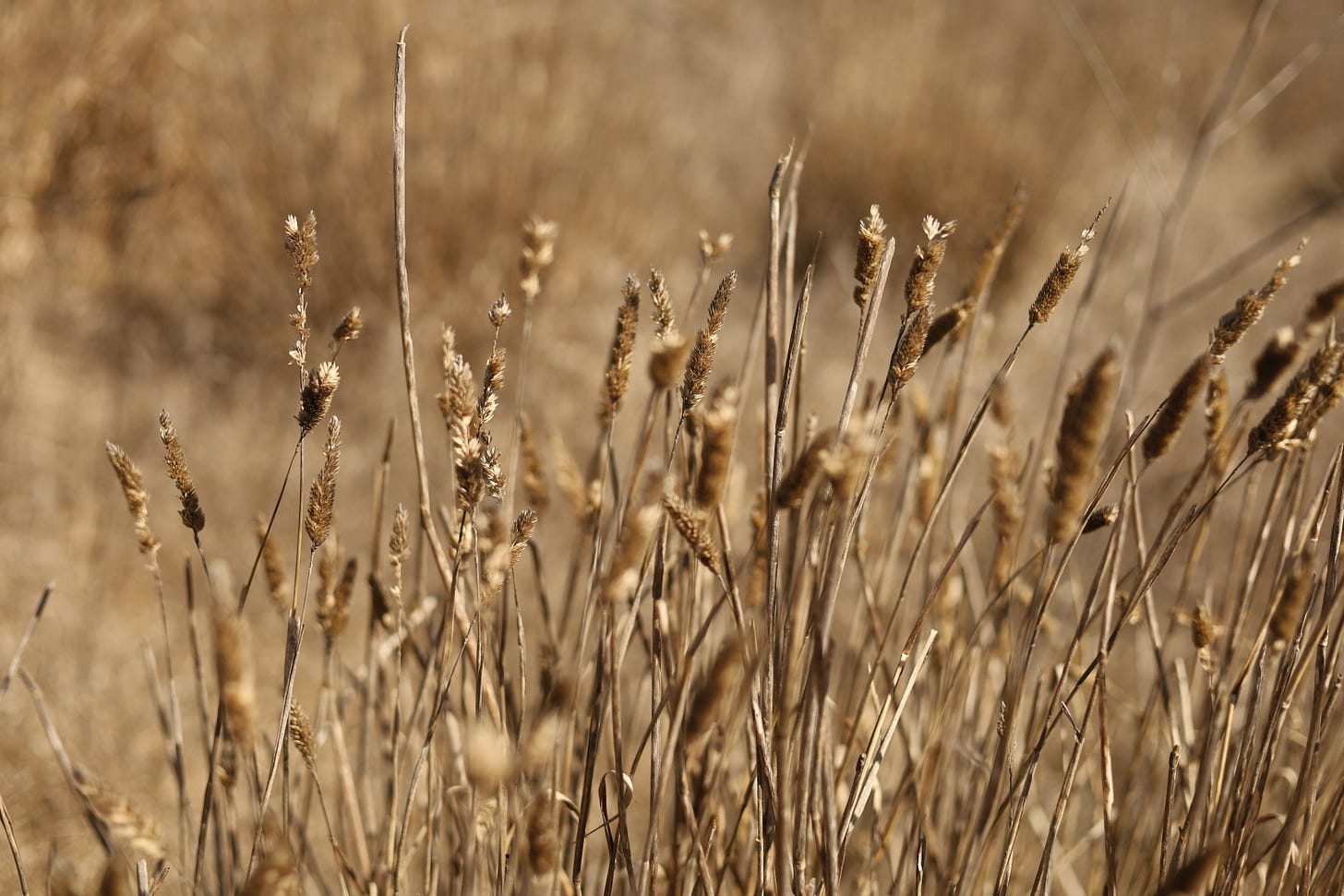The Land Is Not Free
“Fit for 55”, the EU’s masterplan to cut greenhouse gas emissions 55% by 2030 has a major flaw, said a new paper
The European Union’s “Fit for 55” package, a set of proposals to revise and update EU legislation to bring them in line with the goal to reduce emissions by 55% by 2030, could cause more deforestation both at home and abroad because of its bioenergy provisions, said a new paper published in Nature last week. And it is open-access. Hallelujah!
These provisions “assume that biomass is carbon neutral, which is equivalent to saying that land is free”, said Timothy Searchinger, co-author of the paper. He’s a Senior Research Scholar at Princeton University and Senior Fellow and Technical Director of the World Resources Institute’s Food Program.
But of course, land is not free. Often there are crops or trees on these lands and as we know, both play really important roles.
In an earlier paper on Fit for 55, Tim wrote what this assumption of biomass = carbon neutral means and why it is so problematic.
“Carbon neutral means that emissions of CO₂ from the burning of wood or biofuels are ignored. As a result, power plants, households, aviation, and shipping have perverse incentives to burn biomass.”
But biomass isn't carbon neutral. As early as 2009, Tim has been writing about this issue.
“If bioenergy use results from burning wood chips from existing forests for electricity, or clearing rain forests to grow palm oil and other crops for biofuels, bioenergy does not reduce greenhouse gas emissions, and instead may increase them.”
Many more scientists have been pointing this out.
This paper, from a decade ago, said, “Burning biomass for energy provision increases the amount of carbon in the air just like burning coal, oil or gas if harvesting the biomass decreases the amount of carbon stored in plants and soils, or reduces carbon sequestration.”
Last year, 500 scientists and economists wrote a letter to leaders of major industrialised nations urging them to stop turning to biomass to produce electricity. Tim was involved there too.
Now, provisions in the Fit for 55 package divert 20% of croplands to grow energy crops. This means less land for growing food in Europe (or) less land for preserving biodiversity. It will also increase imports of wood for bioenergy by four-fold, meaning deforestation in other countries, the latest paper said.
There's an amendment in the package that would put a cap on wood that can be considered carbon neutral and this could help. But it is unclear if it will come out unscathed from the negotiations currently underway between the European Parliament and the European Council.
But what about the deforestation pledge, you ask?
Yes, there has been a lot of media coverage on a new law that EU agreed just this week, which would prevent the import of deforestation-linked products from abroad.
The legislation will cover “cattle, cocoa, coffee, palm-oil, soya and wood, including products that contain, have been fed with or have been made using these commodities (such as leather, chocolate and furniture)”, according to the EU.
Latest data from scientists show deforestation accounts for about 10% of global greenhouse gas emissions, so this is definitely a really important step, particularly as the biodiversity negotiations got underway this week in Montreal.
Unfortunately, the new law will not halt some of the negative effects on forests and land use spurred by the Fit for 55 plan, the paper said. These effects include a jump in bioenergy use that will require a biomass each year that is twice Europe’s current annual wood harvest.
Outsourcing it all
Europe already outsource 1 out of every 5 hectares of cropland. This is because EU outsources some of its agricultural output elsewhere, predominantly in the developing world.
“Although EU nations expanded their own forests by 13 (million hectares) between 1990 and 2014, the region’s agricultural imports led to an estimated 11 (million hectares) of deforestation outside Europe, mainly in the tropics,” the paper said.
In fact, a 2019 study came to the conclusion that emissions from deforestation account for a sixth of the carbon footprint of an average European diet.
For this latest paper, Tim and his co-authors calculated the quantity of carbon lost per year to generate a tonne of each crop or livestock product that Europe imports and exports and found that:
Europe has been running “a large ‘land-carbon trade deficit’ of around 400 million tonnes of carbon dioxide equivalent (MtCO₂e) per year”, which is higher than the the amount the EU said it sequesters annual from its domestic forests - roughly 300 MtCO₂e.
The EU can change this dynamics by doing a few things, the authors suggested.
Keep its grain productivity
Reduce biofuel consumption to 2010 levels
Reduce per capita consumption of animal products by 17%
Doing these things could free up almost 30% of its cropland, an area nearly the size of Poland, and use this land to benefit climate and biodiversity.
Debate over producing enough food
One other reason why it’s so important not to use cropland for biofuel, besides the fact that biofuel is clearly not carbon neutral, is also that we might need the land.
“Rising populations and incomes put the world on track to require 40–60% more crops and 70% more milk and meat in 2050 than in 2010. Even factoring in higher yields, models project that cropland will expand by 100 million to 400 million hectares globally over this period,” the authors said.
So I asked Tim why we still need to produce so much more when current production levels show we produce enough to feed the world. But Tim said this idea that there is enough food is based on a number of major assumptions, and pointed to this report WRI produced in 2019.
Essentially, we could feed the world with what we currently produce if there is (a) no food loss and waste, (b) no meat and milk, and (c) if there is perfectly equal distribution of food, he said.
“If everyone in the world agreed only to the minimum necessary quantity of housing and we could magically distribute all the world’s housing square footage, that would probably be adequate too,” Tim told me via email.
“But to do that, you need to take lots and lots of stuff from the rich, and that’s not going to happen. In fact, the poor want to consume more like the rich.”
Besides, eliminating food loss and waste isn’t easy because it’s not a single entity wasting 25% to 30% of food but the waste happens along multiple steps, from during the harvest and storage to during transport, processing and sales, he added.
So there goes one of my favourite stats but I’m really keen to hear from anyone who disagrees and has a different view.
Breaking up is hard to do
“Although bioenergy can reduce net emissions over long time frames, the consequence either of harvesting more wood or diverting cropland to bioenergy is likely to be increased carbon in the air for decades,” the paper said.
“The simplest solution is for the EU to stop treating biomass from energy crops and wood harvests as carbon neutral.”
So we’ve established that growing crops for fuel instead of growing them for food or keeping them as forests to preserve biodiversity is a bonkers idea.
Also, get this - Cutting 85% of Europe’s use of biodiesel and half of US and European grain ethanol “could free up enough crops to replace all Ukraine’s vegetable oil and grain exports”, the paper said.
So why is it so difficult for governments to wean themselves of biofuel?
“Politics in the short term,” said Tim.
And the problem is that “once the error is made, powerful interests benefit from it,” said Tim.
“Plus it is true that it would be much easier to solve climate change if there were a lot of carbon neutral biomass, i.e., if there were a carbon neutral carbon-based fuel. Unfortunately, it doesn’t exist.”
Whither climate resilience in Myanmar?
I wrote another ranting op-ed for Mekong Eye, fuelled by a terrible head cold and feelings of hopelessness, frustration and anger that gnaw at me pretty much every single day. With COP27 recently concluded and COP15 just around the corner, I wanted to see if the junta is doing anything at all on these topics.
I didn’t expect much, if at all. But the fact that they weren’t even paying lip service to what’s happening at the world’s most important climate and biodiversity summits still annoyed me.
So I turned that into an op-ed and argued that democracy and respect for human rights are prerequisites if Myanmar is to build climate resilience and preserve its rich biodiversity. I also visited the website of the military government’s environment ministry so you don’t have to.
“What I found instead made me feel like I had entered the twilight zone.
In the “News” section, pages upon pages were devoted to the minister and his deputy in various stiff poses, inspecting factories and plantations or attending meetings. There were also copious updates on the well-being of a white baby elephant born in July.
Myanmar’s successive military leaders have been obsessed with these animals, which were seen as symbols of power and good fortune back in the days of absolute monarchy.”
Have a read here.
As always, have a great weekend! Please feel free to share this post and send tips and thoughts on twitter @thinink, on mastodon @ThinInk@journa.host, on my LinkedIn page or via e-mail thin@thin-ink.net.






Thanks, that was useful. The food loss and food waste issue is a big one. No easy fix but worth the effort.
Very nice piece on biofuels. Also very happy to see more realistic thinking on the food loss and waste issue!